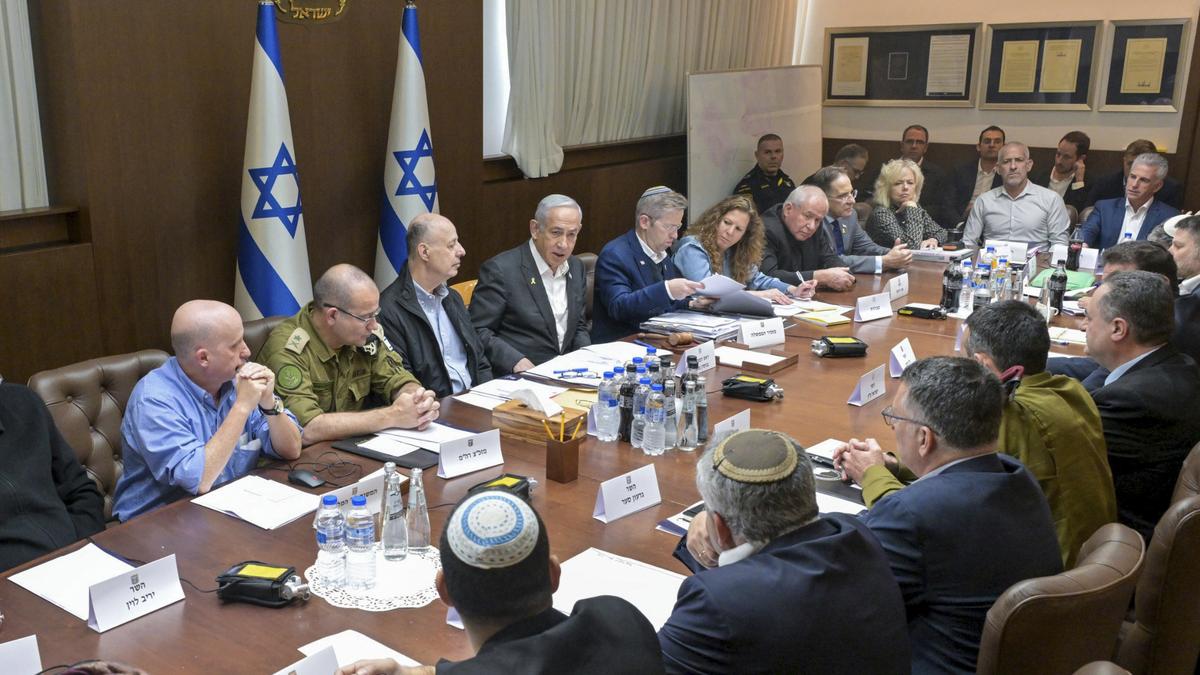Israel-Hamas Ceasefire: A Delicate Balance of Peace and Political Fallout
The 15-month war between Israel and Hamas has finally reached a potential turning point, with a ceasefire deal on the brink of being signed. This agreement, brokered by Qatar and the US, promises to bring a long-awaited pause to the devastating conflict and potentially secure the release of dozens of hostages. However, the road to peace has been anything but smooth, fraught with political challenges that could yet jeopardize the fragile truce. Will the deal ultimately prevail?
The Ceasefire Deal: A Closer Look
The proposed ceasefire, though seemingly straightforward, consists of a series of complex compromises between the two sides. Under the agreement, 33 hostages held by Hamas are expected to be freed over a six-week period, paving the way for a much-needed exchange of prisoners and the return of families who are torn between grief and hope. Simultaneously, Israel will implement a phased withdrawal of its forces from occupied areas in Gaza, allowing hundreds of thousands of displaced Palestinians to return home to what's left. The reconstruction of Gaza, a monumental undertaking, is also included as a major component. But these terms alone fail to encompass the entire magnitude of this multifaceted agreement. One major piece missing in this first step towards peace are the remaining hostages.
Hostage Release: A Phased Approach
The release of hostages, many of whom are soldiers, is divided into phases, making the plan both strategic and tense. This staggered release represents a compromise, and has stirred fierce opposition among Israeli hardliners such as Itamar Ben-Gvir. While this first stage involves 33 hostages, the remaining are only addressed in later phases, which would be negotiated post-ceasefire. With some anticipating that the final deal might come in conflict with stated Israeli and Hamas terms for a resolution to this war, these issues promise further political tension post-ceasefire.
The Rafah Crossing and Humanitarian Aid
Beyond the prisoner exchange, the deal contemplates the reopening of the Rafah crossing between Gaza and Egypt. The reestablishment of Rafah crossing stands to provide critical logistical aid and ease pressure from humanitarian issues. These components of the agreement aim to reduce economic and social stress on the residents of Gaza.
Political Minefield: Obstacles to Peace
The ceasefire deal has not been without its critics within Israel. The hard-line coalition members have expressed fierce opposition to the terms, viewing them as detrimental to their interests and ideology. This opposition casts a serious question upon the agreement and is raising concerns of a wider political crisis even after a fragile deal might be enacted.
Internal Political Divisions
Tensions have soared over the release of Palestinian prisoners in exchange for Israeli hostages. With some in the far-right parties even threatening to leave the coalition in opposition to these policies, there remain deep-seated divisions among factions which are threatening the Prime Minister’s governing capacity to fully commit to this truce. These pressures and factions could potentially trigger a collapse of the Israeli government should Ben-Gvir or others continue their resistance.
Hamas' Demands and Long-Term Implications
Despite initial commitments, Hamas has indicated it might not agree to release all hostages in a deal which does not promise its vision of resolution of the war. Hamas wants further withdrawals in favor of their continued security in their claimed territory. Negotiations may break down should their requirements prove insurmountable to Prime Minister Netanyahu’s cabinet.
Beyond the Ceasefire: Uncertain Future
The successful implementation of the ceasefire is just the first step towards a much broader and complex peace process. Several key questions loom: what political structure will govern Gaza? And who will have the lead on rebuilding and rehabilitation? These questions alone suggest much deeper negotiation must happen if lasting peace can ever take hold. With questions regarding who is at the head of government, the road toward an agreement will undoubtedly take some considerable time.
Reconstruction and Governance of Gaza
Post-conflict reconstruction efforts in Gaza could also become extremely challenging, demanding enormous effort and significant financial resources from international actors, including major contributions from neighboring Middle Eastern countries such as Qatar and Egypt, if the deal holds up to expectation. The road toward stability following a war-torn decade or more depends heavily on sustained international goodwill.
The Path to Lasting Peace
Achieving true peace, lasting peace, remains highly dependent on the willingness and good faith commitment of the Israelis and Palestinians. For it, each party will have to overcome entrenched grievances, addressing a wide array of complex issues across the board, ranging from the fundamental question of self-governance to more economic factors, such as equitable aid distribution and freedom of passage. The next chapter depends upon mutual compromise and long-term peace building, for long-lasting lasting peace.
Take Away Points
- A ceasefire deal between Israel and Hamas is on the verge of being finalized.
- The deal entails a phased release of hostages held by Hamas in exchange for the release of Palestinian prisoners in Israeli jails.
- The reopening of the Rafah crossing is central to allowing the supply of humanitarian aid.
- Strong internal political divisions are threatening the agreement.
- The question of how Gaza's governance and rebuilding efforts will occur post-war remain uncertain.
- International actors will play a critical role in mediating this complex situation for any long term peace.




